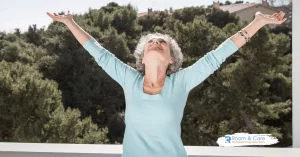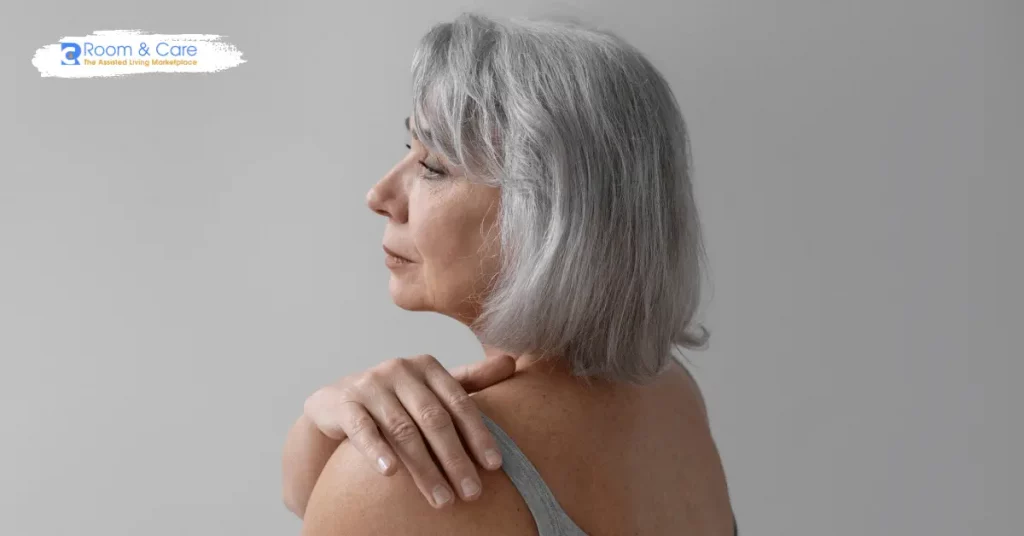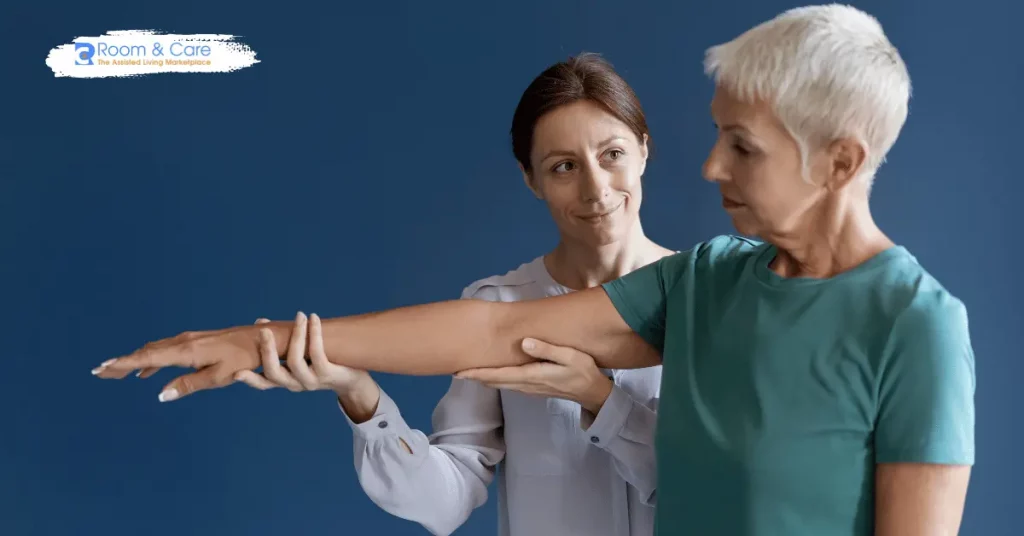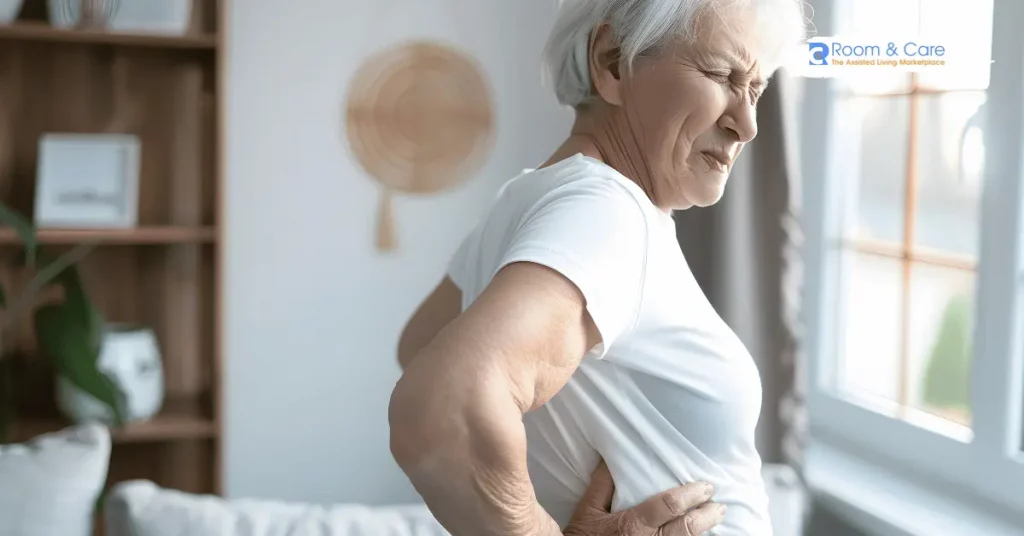

Osteoporosis is a prevalent health issue that significantly impacts elderly females, leading to fragile bones and an increased risk of fractures. As women age, especially after menopause, the likelihood of developing osteoporosis rises due to hormonal changes, decreased physical activity, and other age-related factors. This condition can be particularly challenging for older women residing in senior living communities, such as assisted living facilities, nursing homes, or adult family homes. Understanding the risk factors, prevention strategies, and care options for osteoporosis in elderly females is crucial to ensuring a healthy, active, and independent lifestyle.
Osteoporosis is often called the “silent disease” because it progresses without any noticeable symptoms until a fracture occurs. According to the International Osteoporosis Foundation, around one in three women over the age of 50 will experience osteoporotic fractures. For elderly females, the impact of osteoporosis can be profound. Hip fractures, in particular, can lead to significant disability, loss of independence, and even an increased risk of mortality. Recognizing the importance of osteoporosis and taking steps to manage it effectively can help maintain mobility, reduce the risk of fractures, and enhance overall well-being.
Osteoporosis occurs when the body loses bone mass faster than it can replace it, resulting in bones that become weak and brittle. Several factors contribute to the development of osteoporosis in elderly females:
Osteoporosis often remains undetected until a fracture occurs, but there are some early warning signs:
Preventing osteoporosis or slowing its progression involves a combination of lifestyle changes, diet modifications, and, when necessary, medical intervention. Here are some effective strategies to help manage osteoporosis in elderly females:
A diet rich in calcium and vitamin D is essential for bone health:
Elderly females should aim for a daily intake of 1,200 mg of calcium and 800-1,000 IU of vitamin D to help maintain bone density and strength.
Physical activity is crucial in maintaining bone density and reducing the risk of falls. Recommended exercises include:
Certain lifestyle habits can significantly impact bone health:
Early detection of bone loss through regular bone density tests, such as Dual-Energy X-ray Absorptiometry (DEXA) scans, can help diagnose osteoporosis before a fracture occurs. Regular monitoring helps track bone health and determine the most effective treatment plan.
Various medications can help slow bone loss, improve bone density, and reduce fracture risk. Common options include:
It’s essential to consult with a healthcare provider to determine the most appropriate treatment plan based on individual risk factors and medical history.

For elderly females with osteoporosis, choosing a suitable senior living community is critical for maintaining health and well-being. Here are some essential considerations:
When evaluating a senior living community, it’s vital to ensure that the facility is designed to accommodate those with mobility issues and prevent falls:
Choosing a community that provides specialized osteoporosis care can significantly benefit residents:
Engaging in regular physical and social activities can improve quality of life and support bone health:
Various types of senior living communities offer different levels of care for elderly females with osteoporosis:
Assisted living facilities provide a balance between independence and support, making them ideal for elderly females who need help with daily activities:
For those who require more intensive medical care, nursing homes provide a higher level of support:
Adult family homes offer a more intimate, home-like environment with personalized care:
When selecting a senior living community for an elderly female with osteoporosis, several factors should be considered:

Q: Can osteoporosis be prevented in elderly females?
A: While osteoporosis cannot be entirely prevented, its progression can be slowed through diet, exercise, lifestyle changes, and appropriate medical treatment.
Q: What are the most important nutrients for bone health?
A: Calcium and vitamin D are essential for maintaining bone strength. Foods rich in these nutrients and sunlight exposure can help achieve adequate levels.
Q: How do senior living communities help manage osteoporosis?
A: Senior living communities offer tailored care plans, fall prevention measures, physical therapy, and activities that help manage osteoporosis effectively.
Q: Is exercise safe for elderly females with osteoporosis?
A: Yes, weight-bearing and muscle-strengthening exercises, as well as balance exercises, are safe and recommended to improve bone health and reduce fracture risk.
Osteoporosis in elderly females is a significant health concern that requires proactive management and support. Through a combination of a healthy diet, regular exercise, lifestyle modifications, and appropriate medical care, the progression of osteoporosis can be slowed, and quality of life can be maintained. Choosing the right senior living community, such as an assisted living facility, nursing home, or adult family home, is crucial for providing the necessary support and resources to manage osteoporosis effectively.
At Room and Care, we understand the unique challenges faced by elderly females with osteoporosis. Our platform helps families find the best assisted living facilities, adult family homes, memory care facilities, nursing homes, and independent living communities. We offer these services with no referral fees or middlemen, ensuring direct access to quality care options at reduced costs.
By understanding osteoporosis and making informed decisions, you can help ensure a healthier, more active life for yourself or your loved ones.